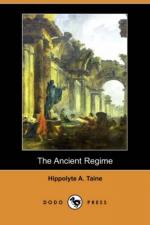_______________________________________________________
__________
Notes:
[1]. Champfort, 110.
[2]. George Sand, V. 59. “I was rebuked for everything; I never made a movement which was not criticized.”
[3]. “Paris, Versailles, et les provinces,” I. 162. — “The king of Sweden is here; be wears rosettes on his breeches; all is over; he is ridiculous, and a provincial king.” ("Le Gouvernement de Normandie,” by Hippeau, IV. 237, July 4, 1784.
[4]. Stendhal, “Rome, Naples and Florence,” 379. Stated by an English lord.
[5] Marivaux, “La Petit-Maître corrigé. — Gresset, “Le Méchant.” Crébillon fils, “La Nuit et le Moment,” (especially the scene between the scene between Citandre and Lucinde). — Collé, “La Verité dans le Vin,” (the part of the abbé with the with the présidente). — De Bezenval, 79. (The comte de Frise and Mme. de Blot). “Vie privée du Maréchal de Richelieu,” (scenes with Mme. Michelin). — De Goncourt, 167 to 174.
[6]. Laclos, “Les Liaisons Dangereuses.” Mme. de Merteuil was copied after a Marquise de Grenoble. — Remark the difference between Lovelace and Valmont, one being stimulated by pride and the other by vanity.
[7]. The growth of sensibility is indicated by the following dates: Rousseau, “Sur l’influence des lettres et des arts,” 1749; “Sur l’inégalité,” 1753; “Nouvelle Héloise,” 1759. Greuze, “Le Pére de Famille lisant la Bible,” 1755; “L’Accordée de Village,” 1761. Diderot, “Le fils natural,” 1757; “Le Pére de Famille,” 1758.
[8]. Mme. de Genlis, “Mémoires,” chap. XVII. — George Sand, I. 72. The young Mme. de Francueil, on seeing Rousseaufor the first time, burst into tears.
[9]. This point has been brought out with as much skill as accuracy by Messieurs de Goncourt in “L’Art au dix-huitième siècle,” I. 433- 438.
[10]. The number for August, 1792, contains “Les Rivaux d’eux-mêmes.” — About the same time other pieces are inserted in the “Mercure,” such as “The federal union of Hymen and Cupid,” “Les Jaloux,” “A Pastoral Romance,” “Ode Anacréontique à Mlle. S. D. . . . " etc.




